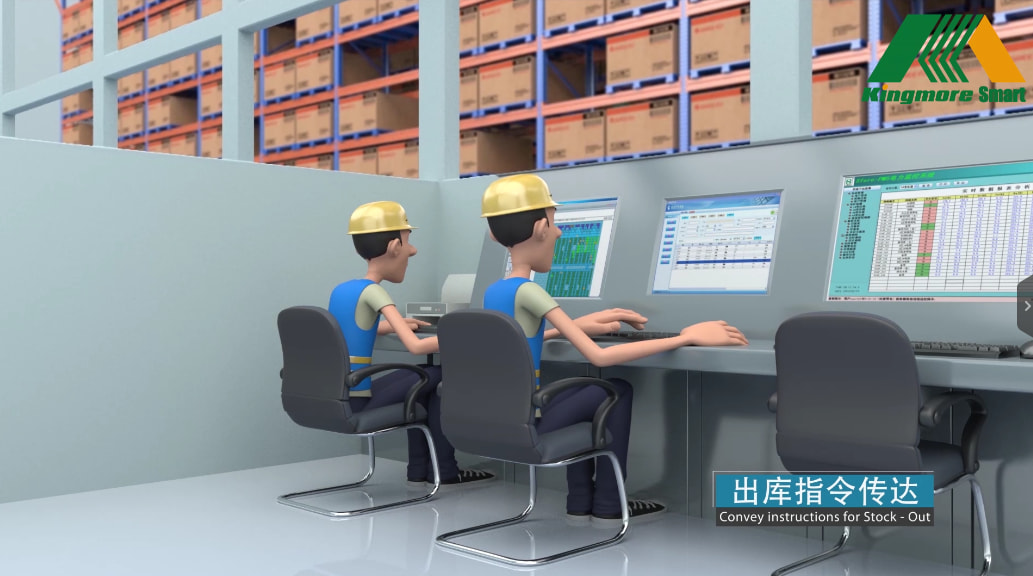창고 제어 시스템(WCS)은 창고 또는 유통 센터 내 운영 프로세스를 제어하고 관리하는 소프트웨어 애플리케이션 또는 플랫폼입니다. 창고 관리 시스템(WMS)과 컨베이어, 분류기, 무인 운반 차량(AGV), 로봇 시스템, 자동 입고/출고 시스템(AS/RS) 등 창고 현장의 자동화 장비 사이의 중간 계층 역할을 합니다.
WCS의 주요 기능은 창고 자동화 시스템 내에서 자재, 재고 및 작업의 흐름을 조정하고 최적화하는 것입니다. WCS는 WMS로부터 주문, 재고 상태, 피킹 우선순위 및 기타 운영 매개변수에 대한 실시간 데이터와 지침을 수신합니다. WCS는 이 정보를 해석하고 자동화 장비에 명령 또는 제어 신호를 생성하여 창고 프로세스의 원활하고 효율적인 실행을 보장합니다.

창고 제어 시스템(WCS)의 주요 특징과 기능은 다음과 같습니다.
1. 장비 제어: WCS는 컨베이어, 분류기, 로봇, 크레인, AS/RS 등 다양한 유형의 자동화 장비와 통신하고 조정하여 장비의 움직임, 속도, 운영 매개변수를 제어합니다.
2. 작업 관리: WCS는 WMS로부터 주문 정보를 수신하고 자동화 장비 및 운영자에게 작업 할당 및 실행을 관리합니다. 작업 순서를 최적화하고, 자원을 할당하고, 작업 진행 상황을 실시간으로 모니터링합니다.
3. 실시간 모니터링 및 가시성: WCS는 장비 상태, 재고 수준, 작업 완료를 포함한 전체 창고 운영에 대한 실시간 모니터링을 제공합니다. 운영 지표, 성과 지표, 예외 알림에 대한 가시성을 제공합니다.
4. 경로 계획 및 최적화: WCS는 장비 가용성, 혼잡, 주문 우선순위와 같은 요소를 고려하여 창고 내 자재 흐름에 가장 효율적인 경로와 경로를 결정하고 이동 시간과 거리를 최소화합니다.
5. 오류 처리 및 복구: WCS는 창고 운영 중 발생할 수 있는 장비 오작동, 재고 불일치, 작업 누락 등 예외나 오류를 감지하고 처리합니다. 자동 복구 프로세스를 시작하고, 작업을 재할당하고, 수동 개입을 위한 알림을 생성할 수 있습니다.
6. 통합 및 인터페이스: WCS는 WMS 및 ERP(전사적 자원 관리)와 같은 다른 엔터프라이즈 시스템과 통합되어 데이터를 교환하고 창고 운영을 전체 비즈니스 프로세스와 동기화합니다. 또한 창고 운영자가 시스템을 모니터링하고 상호 작용할 수 있도록 사용자 인터페이스 또는 대시보드를 제공할 수도 있습니다.
요약하자면, 창고 제어 시스템(WCS)은 창고 내 상위 WMS와 하위 자동화 장비 간의 간극을 메우는 소프트웨어 계층입니다. 자동화 시스템의 효율적이고 동기화된 운영을 보장하여 창고 프로세스의 실시간 제어, 최적화 및 가시성을 제공합니다.

Add: RM. 1204, BLDG.-2, NEW SPACE DEVELOPMENT CENTER, NO.126 TIANYUAN RD., JIANGNING, NANJING, CHINA.